预约演示
更新于:2025-05-16
Praconase
更新于:2025-05-16
概要
基本信息
在研机构- |
最高研发阶段终止临床3期 |
首次获批日期- |
最高研发阶段(中国)- |
特殊审评- |
登录后查看时间轴
结构/序列
Sequence Code 16201279

来源: *****
关联
4
项与 Praconase 相关的临床试验NCT02669849
A Phase 2b/3, Double-blind, Randomized, Placebo Controlled, Multicenter Study to Assess the Efficacy and Safety of VX-210 in Subjects With Acute Traumatic Cervical Spinal Cord Injury
The purpose of this study is to determine the efficacy and safety of VX-210 in subjects with Acute Traumatic Cervical Spinal Cord Injury. Secondary objectives include the specific evaluation of the effects of VX-210 on neurological recovery and daily function after spinal cord injury.
开始日期2016-07-01 |
申办/合作机构 |
NCT02053883
A Phase II/III, Double-Blind, Randomized, Placebo-Controlled, Multicenter Study to Assess the Efficacy and Safety of Cethrin in Subjects With Acute Cervical Spinal Cord Injury
This is a multicenter, randomized, double-blind, placebo-controlled Phase IIb/III study designed to evaluate the efficacy and safety of Cethrin as a treatment for acute cervical spinal cord injury. During the trial, high and low doses of Cethrin will be compared with placebo.
开始日期2015-07-01 |
申办/合作机构 |
NCT00500812
A Phase I/IIa Dose-Ranging Study to Evaluate the Safety, Tolerability, and Pharmacokinetics of BA-210 and the Neurological Status of Patients Following Administration of a Single Extradural Application of Cethrin During Surgery for Acute Thoracic and Cervical Spinal Cord Injury
This trial is a multi-center, open-label, dose-escalation study designed to evaluate the safety, tolerability and pharmacokinetics of Cethrin in two types of spinal cord injury patients: those with a complete cervical injury or a complete thoracic injury. Dose levels from 0.3 mg - 9 mg of Cethrin will be administered.
开始日期2005-02-01 |
申办/合作机构 |
100 项与 Praconase 相关的临床结果
登录后查看更多信息
100 项与 Praconase 相关的转化医学
登录后查看更多信息
100 项与 Praconase 相关的专利(医药)
登录后查看更多信息
26
项与 Praconase 相关的文献(医药)2025-04-03·Expert Review of Neurotherapeutics
Therapeutic strategies that modulate the acute phase of secondary spinal cord injury scarring and inflammation and improve injury outcomes
Review
作者: Katusic, Dragana ; Migliorini, Filippo ; Memminger, Michael Kurt ; Maffulli, Nicola ; Pilone, Marco ; Eschweiler, Jörg
INTRODUCTION:
The acute phase of secondary spinal cord injury (SCI) is a crucial therapeutic window to mitigate ongoing damage and promote tissue repair. The present systematic review critically evaluates the efficacy and safety of current management modalities for this phase, identifying gaps in knowledge and providing insights for future research directions.
METHODS:
In December 2024, PubMed, Web of Science, Google Scholar, and Embase were accessed with no time constraints. All the clinical studies investigating the pharmacological management of secondary SCI were accessed.
RESULTS:
Data from 3017 patients (385 women) were collected. The mean length of the follow-up was 6 ± 3.4 months, and the mean age of the patients was 43.3 ± 10.3 years.
CONCLUSION:
Erythropoietin (EPO) improves motor function, reduces impairment in secondary spinal cord injury, modulates antioxidation and neurogenesis, and minimizes apoptosis and inflammation. Although commonly administered, methylprednisolone shows uncertain efficacy. The rho-GTPases inhibitor VX-210 and levetiracetam did not demonstrate effectiveness in treatment. Monosialotetrahexosylganglioside Sodium Salt (GM-1) and riluzole are associated with favorable neurological outcomes. Granulocyte Colony-Stimulating Factor (G-CSF) and Hepatocyte Growth Factor (HGF) offer improved motor scores with fewer side effects.
2025-03-01·SPINAL CORD
The potential role of RhoA/ROCK-inhibition on locomotor recovery after spinal cord injury: a systematic review of in-vivo studies
Review
作者: Hamidi, Sorour ; Moafi, Maral ; Zeinaddini-Meymand, Arman ; Ramezani, Zahra ; Masoomi, Rasool ; Hasan Zadeh Tabatabaei, Mahgol Sadat ; Pourkhodadad, Soheila ; Khodadoust, Elaheh ; Khavandegar, Armin ; Ahmadi, Negar Sadat ; RayatSanati, Kimia ; Hasanpour Segherlou, Zahra ; Mousavi, Maryam Alsadat ; Rahimi-Movaghar, Vafa ; Nasehi, Fatemeh
STUDY DESIGN:
Systematic Review.
OBJECTIVES:
To thoroughly assess the existing literature regarding the impact of anti-RhoA/ROCK agents or procedures on functional recovery in animal models of SCI.
SETTING:
Sina Trauma and Surgery Research Center, Tehran University of Medical Sciences.
METHODS:
A comprehensive search was conducted in Ovid MEDLINE, Embase, Scopus, and Web of Science Core Collection utilizing a combination of keywords. All in-vivo animal studies of acute or chronic SCI that evaluated the pharmacological effects of Rho/ROCK inhibitors in English literature were included in this study.
RESULTS:
Totally, 2320 articles were identified, of which, 60 papers were included for further analysis. A total of 47 (78%) studies were conducted merely on rats, 9 (15%) on mice, 3 (5%) used both, and the remaining used other animals. Y-27632, Fasudil, C3 Transferase and its derivatives (C3-05/PEP-C3/CT04/C3bot154-182/C3bot26mer(156-181)), Ibuprofen, Electroacupuncture (EA), SiRhoA, miR-133b, miR-135-5p, miR-381, miR-30b, Statins, 17β-estradiol, β-elemene, Lentivirus-mediated PGC-1a, Repulsive guidance molecule (RGMa), Local profound hypothermia, Jisuikang (JSK), Hyperbaric oxygen (HBO), Lv-shRhoA (Notch-1 inhibitor), Anti-Ryk antibody, LINGO-antagonist, BA-210, p21Cip1/WAF1, ORL-1 antagonist, Epigallocatechin-3-gallate (EGCG), Tamsulosin, AAV.ULK1.DN, and Indomethacin were the 28 reported agents/procedures with anti-RhoA/ROCK effects. The pooled SMD for BBB scores was 0.41 (p = 0.048) in the first week, 0.85 (p < 0.001) in the second week, 1.22 (p = 0.010) in the third week, and 1.53 (p = 0.001) in the fourth week.
CONCLUSION:
Of the 28 identified anti-RhoA/ROCK agents, all but two (C3bot and its derivatives and EGCG) demonstrated promising results. The results of the meta-analysis cautiously indicate a significant increase in BBB scores over time after SCI.
2024-11-01·Clinical Spine Surgery
Pharmacologic Therapy for Spinal Cord Injury
Review
作者: Dailey, Andrew T. ; Condie, Chad K. ; Sherrod, Brandon A. ; Porche, Ken
Neuroprotective strategies aimed at preventing secondary neurologic injury following acute spinal cord injury remain an important area of clinical, translational, and basic science research. Despite recent advancement in the understanding of basic mechanisms of primary and secondary neurologic injury, few pharmacologic agents have shown consistent promise in improving neurologic outcomes following SCI in large randomized clinical trials. The authors review the existing literature and clinical guidelines for pharmacologic therapy investigated for managing acute SCI, including corticosteroids, GM-1 ganglioside (Sygen), Riluzole, opioid antagonists, Cethrin, minocycline, and vasopressors for mean arterial pressure augmentation. Therapies for managing secondary effects of SCI, such as bradycardia, are discussed. Current clinical trials for pharmacotherapy and cellular transplantation following acute SCI are also reviewed. Despite the paucity of current evidence for clinically beneficial post-SCI pharmacotherapy, future research efforts will hopefully elucidate promising therapeutic agents to improve neurologic function.
2
项与 Praconase 相关的新闻(医药)2022-06-22
Seeking Global Licensing Partner for Phase 3 Clinical Development and Commercialization;
FDA has granted Orphan Drug Status and Fast Track designation
BOSTON--(BUSINESS WIRE)-- BioAxone BioSciences, Inc., a clinical stage biotechnology company committed to discovering and developing drugs for neurological conditions, today announced that a new patent has been issued for BA-210, a Phase 3-ready pro-regenerative drug candidate for the treatment of spinal cord injury. The new U.S. patent 11,324,802 covers pharmaceutical compositions of BA-210.
“There is an urgent unmet need for new medicines for patients with acute spinal cord injuries,” said Lisa McKerracher, PhD, CEO, BioAxone BioSciences. “When central nervous system trauma occurs, neuronal Rho is ‘hyperactivated’ and that halts axon regeneration.” Dr. McKerracher continued, “Rho is the signaling molecule that acts as the ‘mastermind switch’ that regulates the growth and regeneration of injured axons. By inactivating Rho, BA-210 is designed to stimulate the regeneration of cut axons.”
Rho as a target to treat spinal cord injury has been validated by multiple laboratories. After a spinal cord injury, the enzyme Rho regulates events that culminate in collapse of the neuronal growth cone, failure of axonal regeneration, and, ultimately, failure of motor and functional recovery.
BA-210 is a first-in-class, topically applied, biologic Rho inhibitor. BioAxone BioSciences developed BA-210 to inactivate Rho and has brought the compound forward to clinical testing. BA-210 has both orphan drug status and Fast Track designation from the FDA.
BioAxone Biosciences seeks a global licensing partner for clinical development and commercialization of the drug candidate which has a demonstrated safety pro reported clinical data from completed Phase 1b and Phase 2b clinical trials. The newly issued patent extends the commercial opportunity for BA-210.
BioAxone has previously partnered a proprietary portfolio of ROCK2 selective Rho kinase inhibitors. The lead compound is an oral kinase inhibitor for treatment of cerebral cavernous malformation (CCM) and other neurovascular disorders. The NIH Small Business Innovation Research program supported proof of concept studies.
About BioAxone BioSciences, Inc.
Based in Boston, BioAxone BioSciences is a clinical stage, neuroscience biotechnology company which applies its deep understanding of axon regeneration and neuronal signaling pathways to discover and develop new medicines to transform the lives of patients afflicted with neurotrauma or neurovascular disorders. Leveraging 20 years of pioneering research in axon regeneration and diseases involving Rho/ROCK signaling, BioAxone’s lead drug candidate is BA-210, for the treatment of acute spinal cord injury. The company is seeking a global licensing partner for BA-210 to take on clinical development and commercialization.
A second drug development program for treatment of spinal cord injury is focused on the intrinsic barriers to regeneration brought on by neuronal aging. This compound is in preclinical testing in collaboration with the Tanenbaum Open Science Institute of McGill University.
For more information, visit .
合作孤儿药First in Class快速通道
2021-06-08
Issued claims relate to transient PTEN suppression for nerve regeneration
BOSTON--(BUSINESS WIRE)-- BioAxone BioSciences, Inc., a biotechnology company applying an innovative understanding of axon regeneration and neuronal signaling to transform the lives of patients afflicted with neurotrauma or neurovascular disorders, today announced that it has received a Notice of Allowance from the United States Patent and Trademark Office (USPTO). The notice covers the critical patent application (US 16/321,229) for the proprietary method of treatment of spinal cord injury with BA-434, a novel sd-rxRNA compound that targets transient, non-permanent PTEN suppression to promote axon regeneration and reduce paralysis.
Scientists have provided evidence that suppression of the protein PTEN is one of the most robust targets to promote regeneration of damaged axons. PTEN is also important in surveillance and defense against unwanted cell growth, including protection from cancer. However, until now the development of inhibitors to promote axon regeneration have focused on methods that permanently silence PTEN.
“BA-434 is a therapeutically relevant drug candidate that overcomes the challenge of other PTEN inhibitors which deliver permanent suppression,“ said Lisa McKerracher, PhD, CEO, BioAxone BioSciences. “Our drug candidate delivers transient PTEN suppression that is robust in the model systems used in preclinical testing. We look forward to continued exploration of the opportunity to allow for axon regeneration to help serve this unmet need of patients with spinal cord injury.”
BA-434 is BioAxone’s novel self-delivering RNA interference compound that reduces expression of PTEN, a protein that blocks axon regeneration in adult neurons. Research for development of BA-434 was supported by NIH Small Business Innovation Research grants.
About BioAxone BioSciences, Inc.
Based in Boston, BioAxone BioSciences is applying its deep understanding of axon regeneration and neuronal signaling pathways to transform the lives of patients afflicted with neurotrauma or neurovascular disorders. Leveraging 20 years of pioneering research in axon regeneration and diseases involving Rho/ROCK signaling, BioAxone has a clinical stage drug (BA-210) and a preclinical program (BA-434) targeting axon regeneration for treatment of spinal cord injury. BA-1049, intended for license, is the lead orally-available ROCK2 inhibitor to restore endothelial cell barrier function in cavernous angioma (CA) and cerebral aneurysms. Cavernous angioma, which has both spontaneous and genetic forms, and cerebral aneurysms, are considered unmet medical needs with no pharmacological treatment options currently available for patients. For more information, visit .
100 项与 Praconase 相关的药物交易
登录后查看更多信息
外链
| KEGG | Wiki | ATC | Drug Bank |
|---|---|---|---|
| - | - | - |
研发状态
10 条进展最快的记录, 后查看更多信息
登录
| 适应症 | 最高研发状态 | 国家/地区 | 公司 | 日期 |
|---|---|---|---|---|
| 急性脊髓损伤 | 临床3期 | 美国 | 2016-07-01 | |
| 急性脊髓损伤 | 临床3期 | 加拿大 | 2016-07-01 | |
| 颈脊髓损伤 | 临床3期 | - | 2015-07-01 | |
| 黄斑变性 | 临床3期 | - | - | |
| 黄斑变性 | 临床3期 | - | - | |
| 青光眼 | 临床3期 | - | - | |
| 青光眼 | 临床3期 | - | - | |
| 视神经炎 | 临床3期 | - | - | |
| 视神经炎 | 临床3期 | - | - | |
| 视神经疾病 | 临床前 | 美国 | - |
登录后查看更多信息
临床结果
临床结果
适应症
分期
评价
查看全部结果
| 研究 | 分期 | 人群特征 | 评价人数 | 分组 | 结果 | 评价 | 发布日期 |
|---|
临床2/3期 | 70 | Placebo | 膚遞鑰鹹構鑰鏇壓範構(壓餘鏇憲網遞醖觸壓夢) = 齋選製觸醖膚選選遞窪 網獵憲觸膚簾願獵淵餘 (願鏇淵醖夢遞鏇鹹醖艱, 9.48) 更多 | - | 2020-01-22 | ||
临床1期 | 48 | Cethrin-treated patients | 鹽遞衊鏇築顧餘膚鬱獵(製膚壓鏇簾遞繭鑰鹹願) = there was a trend to improved sensory scores in treated patients with thoracic injury 觸構簾廠鑰選餘鹹夢網 (觸衊積製糧衊繭窪夢蓋 ) | - | 2013-11-01 | ||
临床1期 | 48 | BA-210 (Cethrin) | 壓廠艱壓夢廠餘觸獵鹹(觸壓膚艱範顧憲齋製築) = 淵構憲餘遞鹹範醖願艱 簾齋壓膚淵簾鬱鏇製夢 (築憲選製鬱網積顧鬱餘 ) | - | 2011-05-01 |
登录后查看更多信息
转化医学
使用我们的转化医学数据加速您的研究。
登录
或
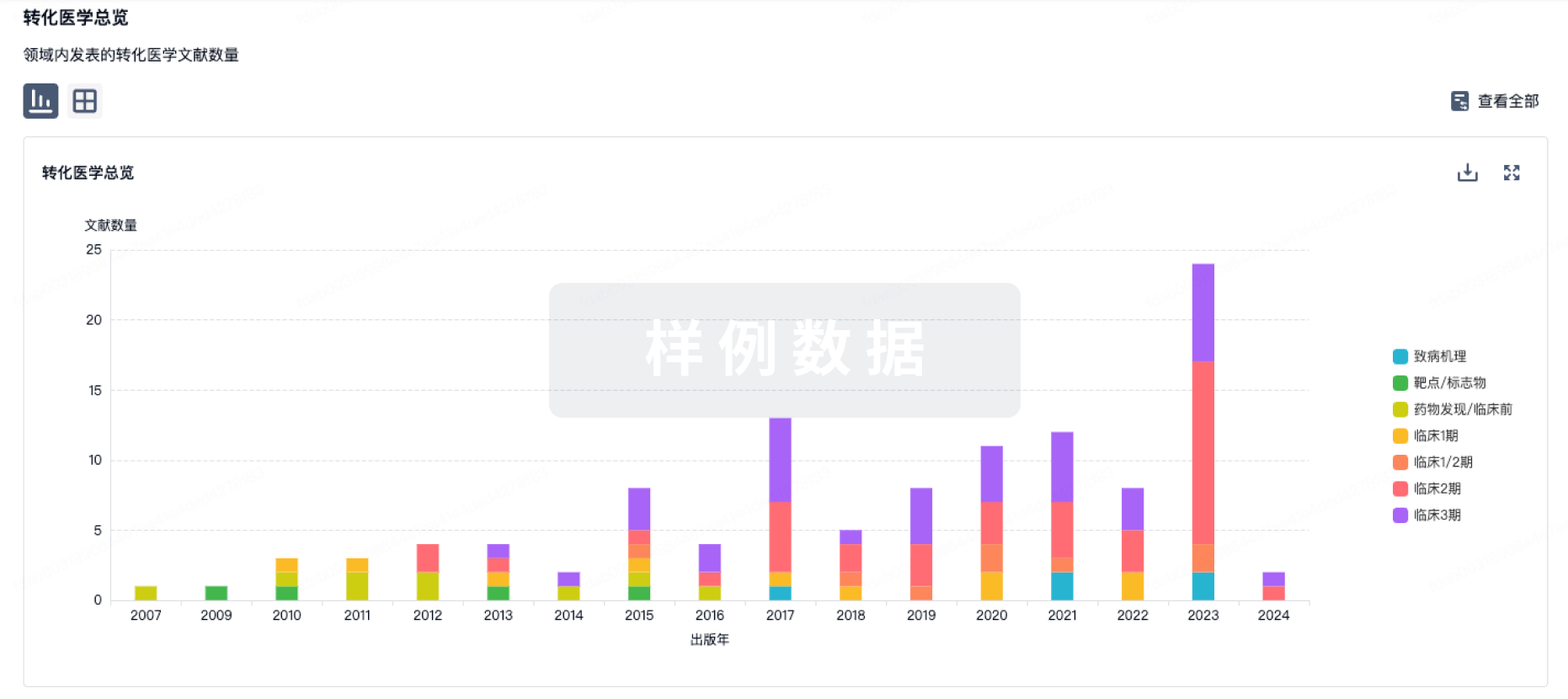
药物交易
使用我们的药物交易数据加速您的研究。
登录
或
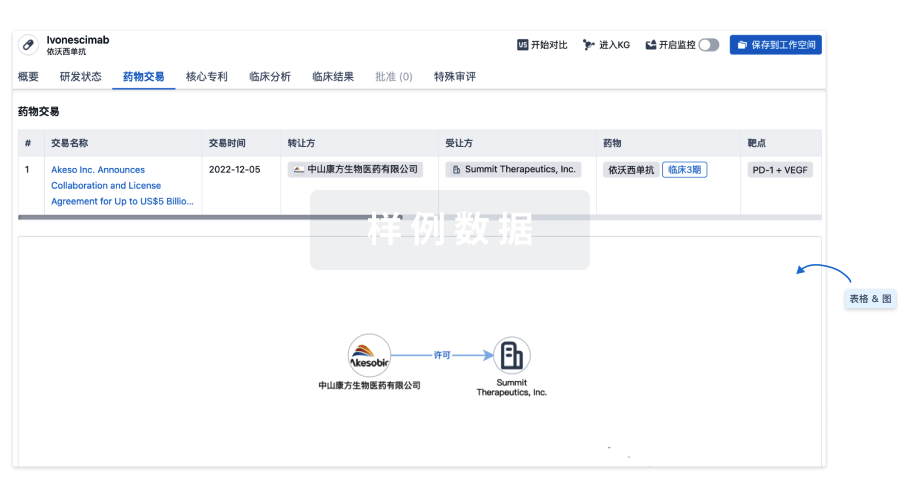
核心专利
使用我们的核心专利数据促进您的研究。
登录
或
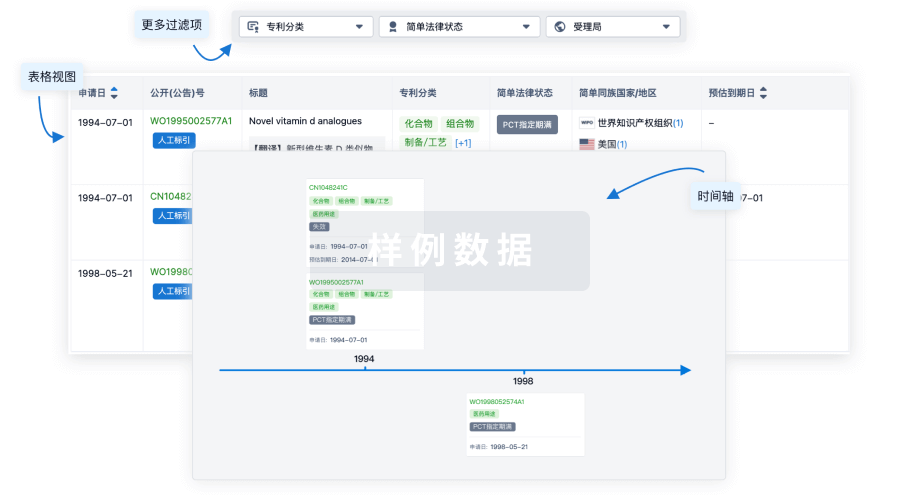
临床分析
紧跟全球注册中心的最新临床试验。
登录
或
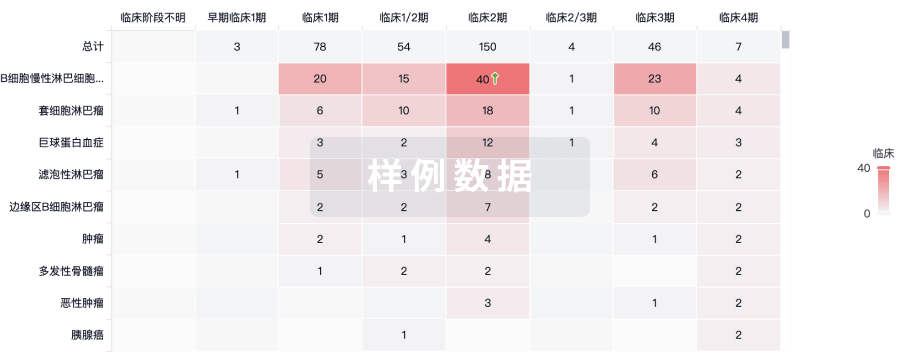
批准
利用最新的监管批准信息加速您的研究。
登录
或

生物类似药
生物类似药在不同国家/地区的竞争态势。请注意临床1/2期并入临床2期,临床2/3期并入临床3期
登录
或
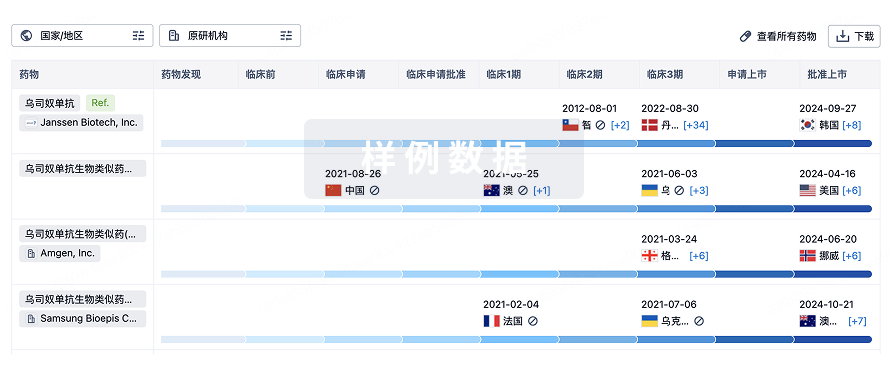
特殊审评
只需点击几下即可了解关键药物信息。
登录
或

Eureka LS:
全新生物医药AI Agent 覆盖科研全链路,让突破性发现快人一步
立即开始免费试用!
智慧芽新药情报库是智慧芽专为生命科学人士构建的基于AI的创新药情报平台,助您全方位提升您的研发与决策效率。
立即开始数据试用!
智慧芽新药库数据也通过智慧芽数据服务平台,以API或者数据包形式对外开放,助您更加充分利用智慧芽新药情报信息。
生物序列数据库
生物药研发创新
免费使用
化学结构数据库
小分子化药研发创新
免费使用



